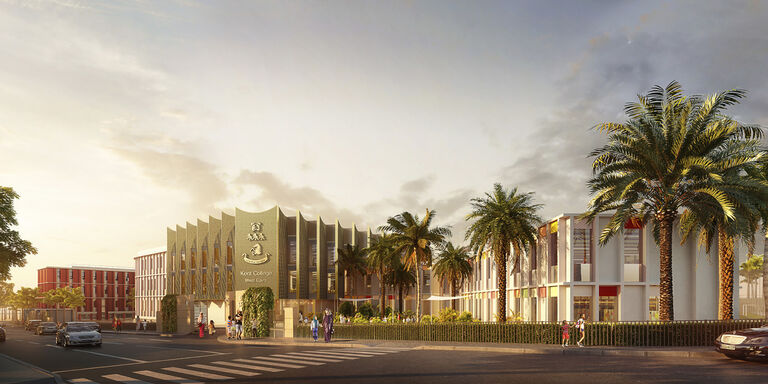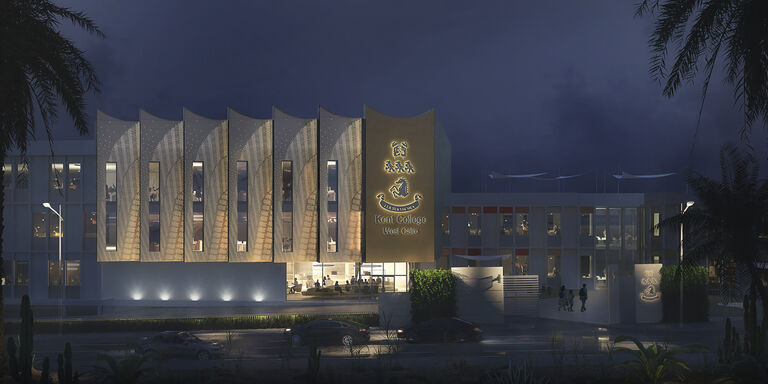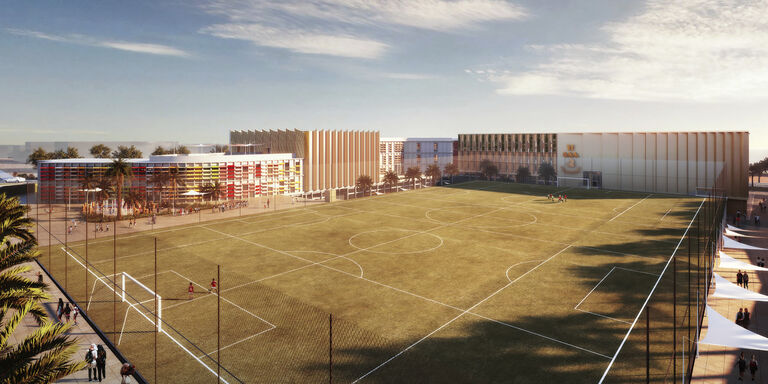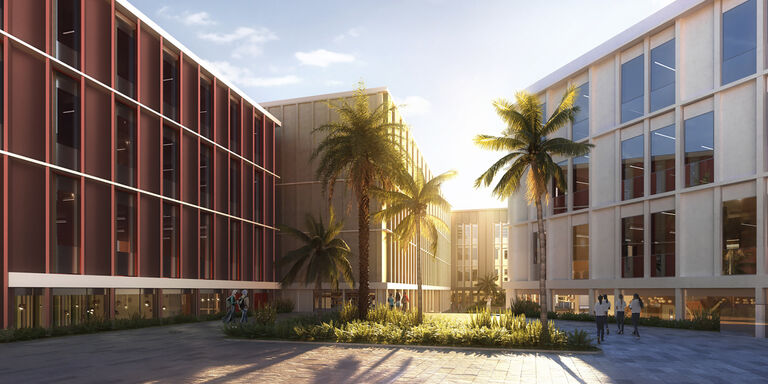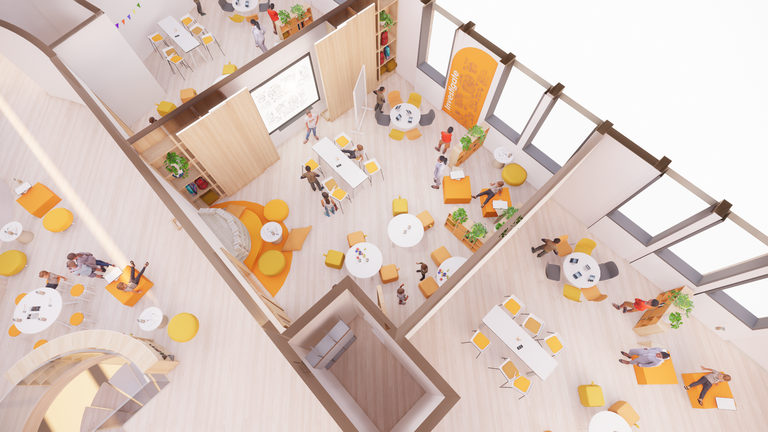Kent College West Cairo, Broadway Malyan’s second collaboration with the famous UK school having designed its first international school in Dubai in 2016, is being developed and operated in partnership with Sagah Investments and is set to open its doors to students in 2022.
The £25m (EGP 500m) project is one of three new schools being built in O West, a new district being developed by international developer Orascom in 6th of October city, 20 miles to the west of Cairo in the Giza Governorate.
